Skywalker X8 Drone CFD Simulation, ANSYS Fluent
$100.00 Student Discount
- The problem numerically simulates a Skywalker X8 UAV using ANSYS Fluent software.
- We design the 3-D model with the Design Modeler software.
- We mesh the model with Fluent Meshing software. The element number equals 928,595 and their type is polyhedra.
- Multiple Reference Frames (Frame Motion) are used to model the rotational motion of the propeller.
To Order Your Project or benefit from a CFD consultation, contact our experts via email ([email protected]), online support tab, or WhatsApp at +44 7443 197273.
There are some Free Products to check our service quality.
If you want the training video in another language instead of English, ask it via [email protected] after you buy the product.
Description
Skywalker X8 UAV Aerodynamic CFD Simulation, ANSYS Fluent Tutorial
Introduction
The X-8 was created especially for FPV and UAV, and it was modified for F-Tek stabilization devices.
An incredible looking and flying FPV/UAV platform made of virtually indestructible EPO that has a great design. This type has enormous under-carriage space, exceptional glide performance, and quick low-power cruise speeds.
In this simulation, a Skywalker X8 UAV with one propeller rotating around the horizontal axis is modeled using ANSYS Fluent software. The device is moving at a speed of 50 km/h.
The geometry of the present model is three-dimensional and has been designed using Design Modeler software. We do the meshing of the present model with Fluent Meshing software. The mesh type is Polyhedra, and the element number is 928,595.
Methodology: Skywalker X8 UAV CFD Simulation
The Multiple Reference Frames (MRF) method is used to model the rotational motion of the propellers.
Conclusion
After the simulation process was finished, contours and vectors for parameters such as velocity, pressure and turbulent intensity were obtained. As shown in the velocity contours, the vortexes behind the propeller are visible where the turbulent intensity parameter is high.
This UAV model experiences less drag than other UAVs do. One of the causes for this is the lack of any UAV components behind the vortexes, as these vortexes dramatically increase drag when they strike any component.
As was expected in the static pressure parameter situation, the UAV’s front surfaces experience the most pressure. It is at the edges of the propellers where the greatest static pressure is applied, demonstrating the importance of this component in production.
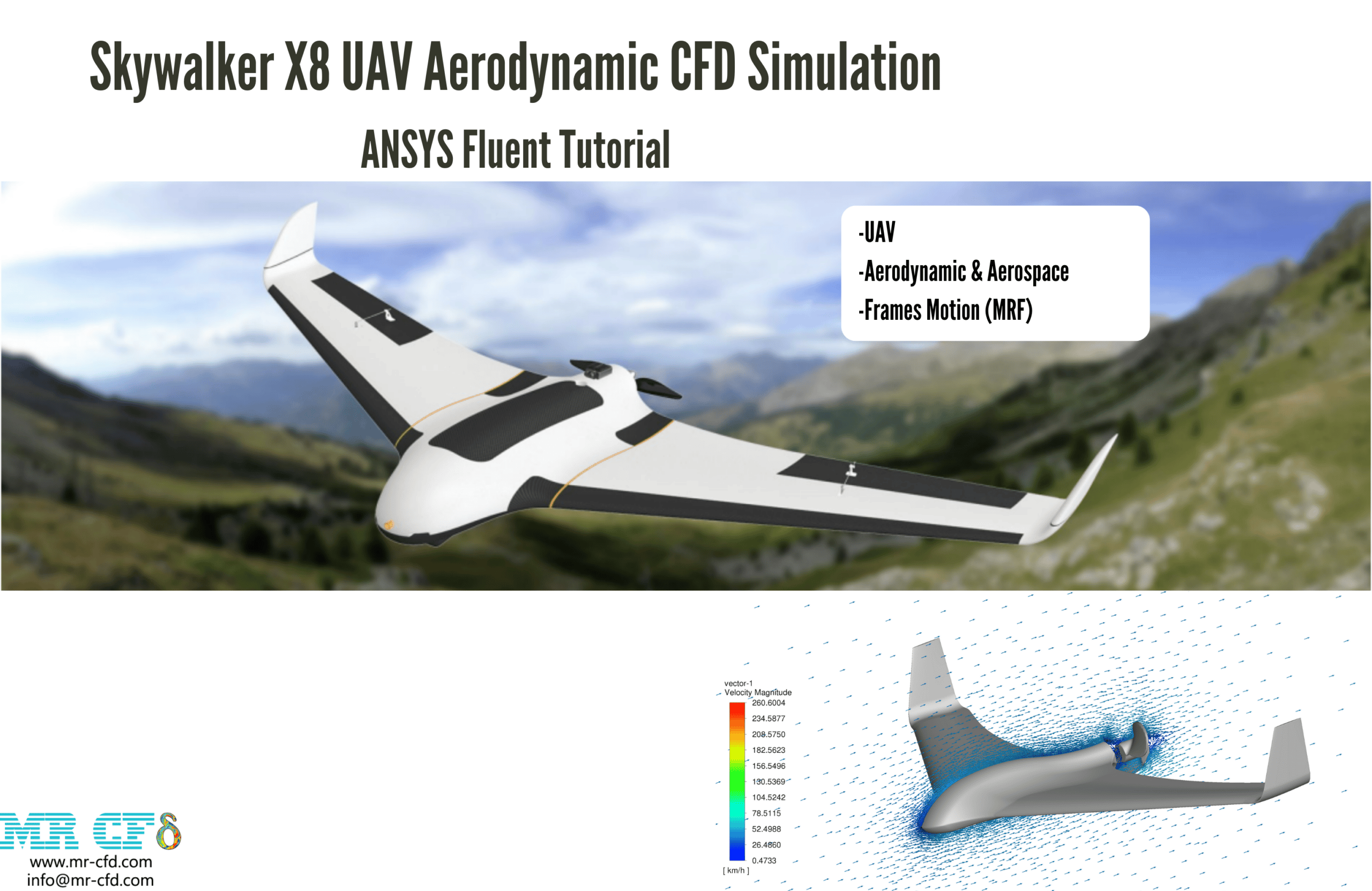
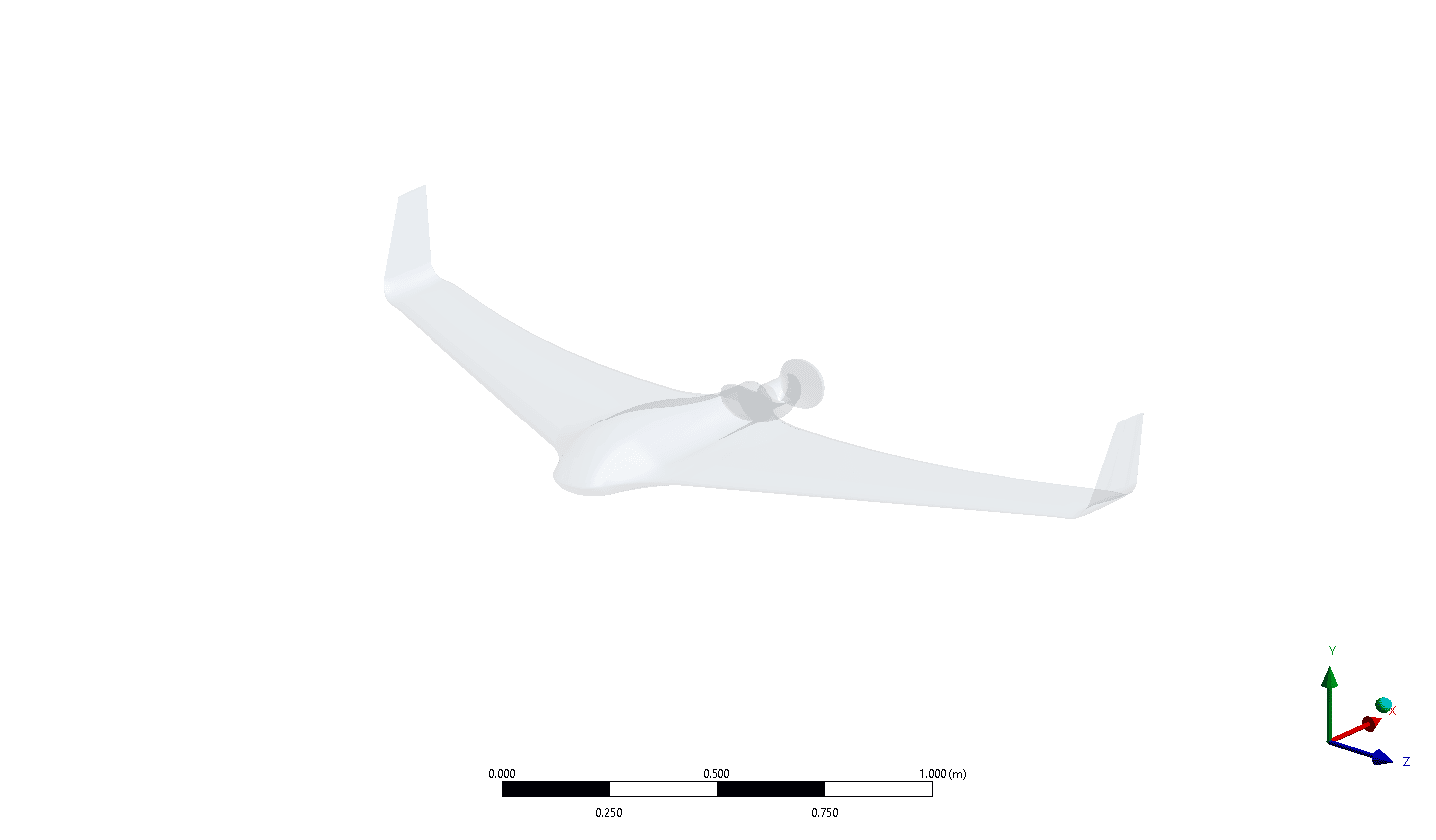
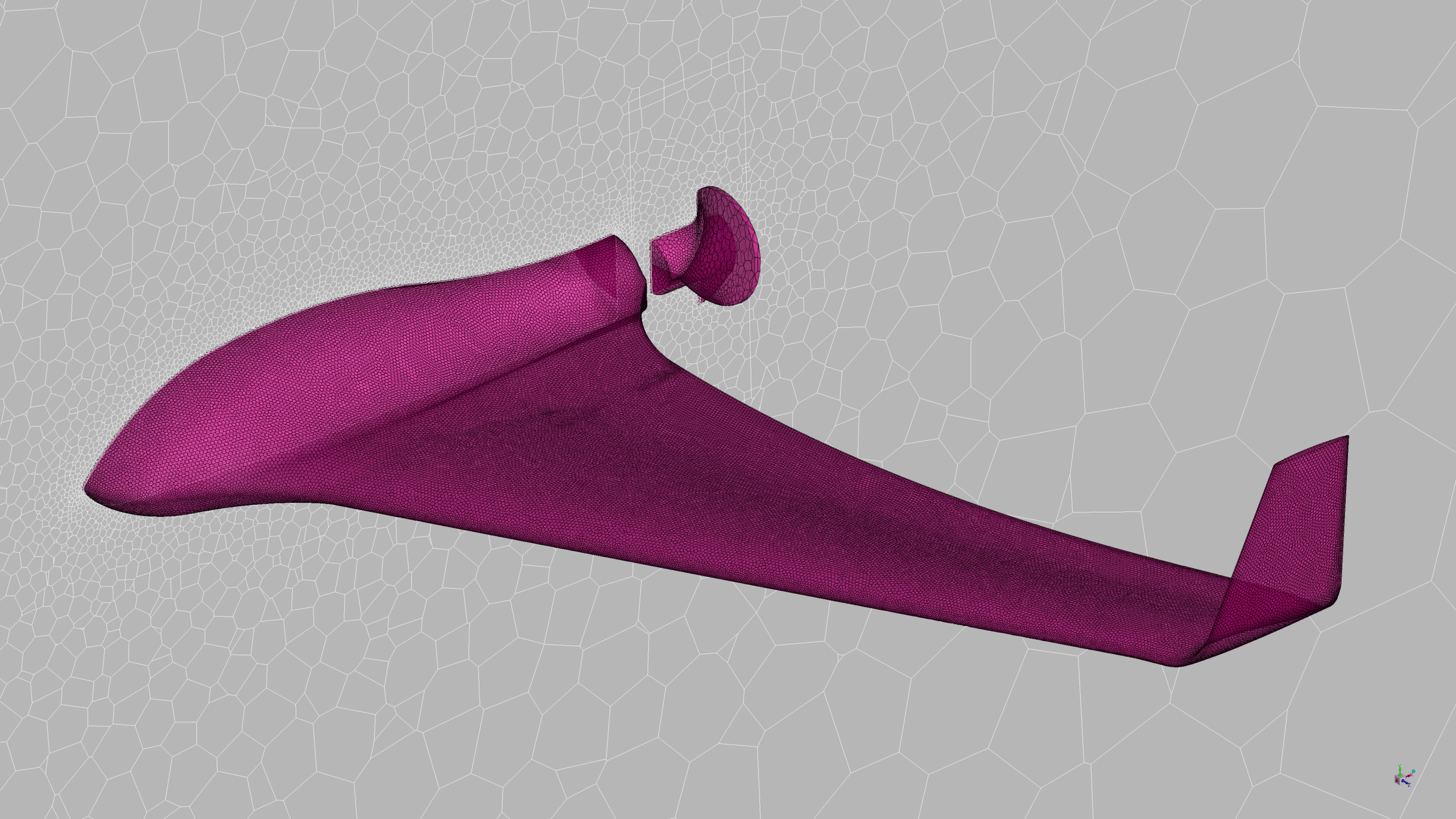
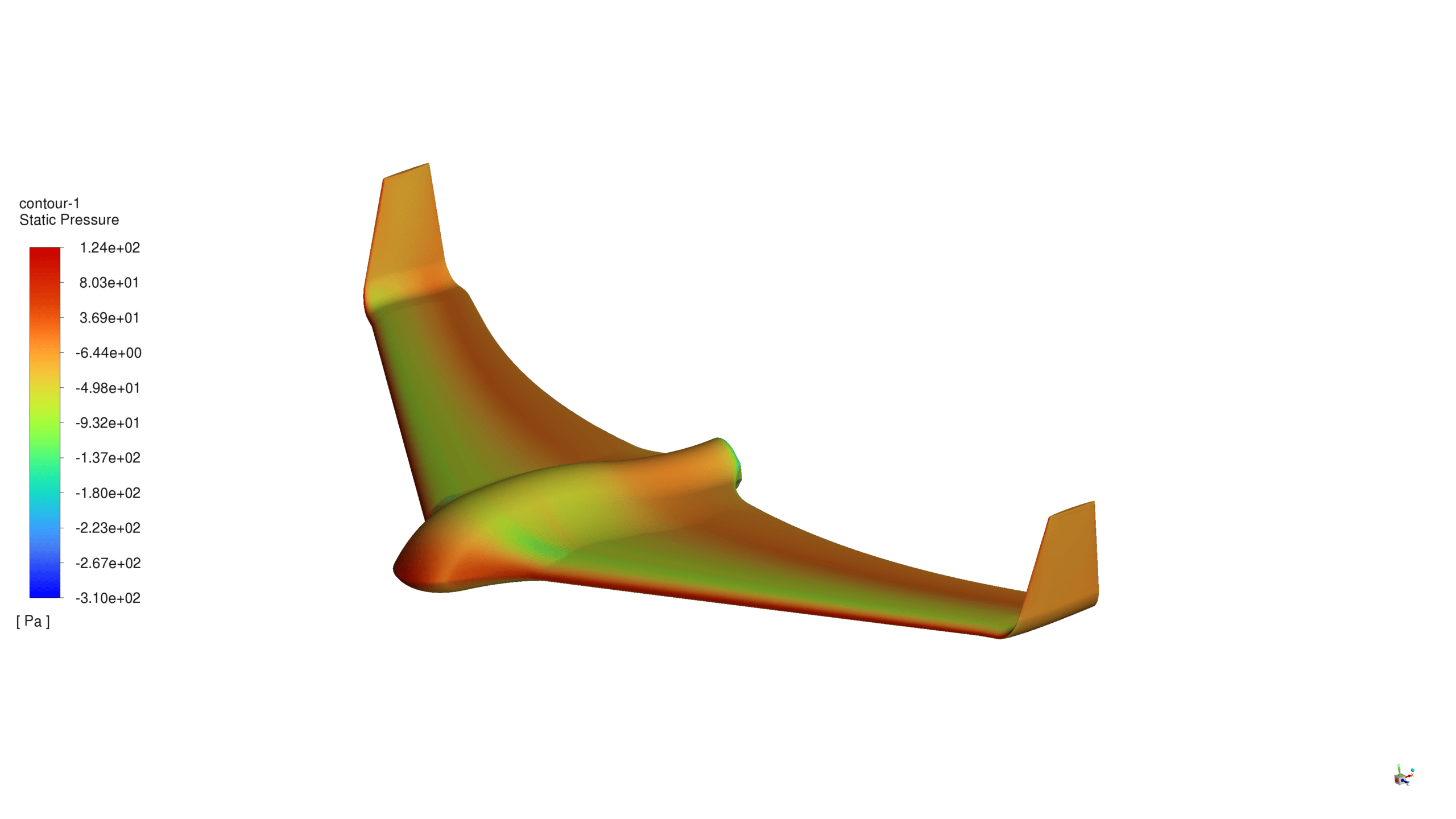
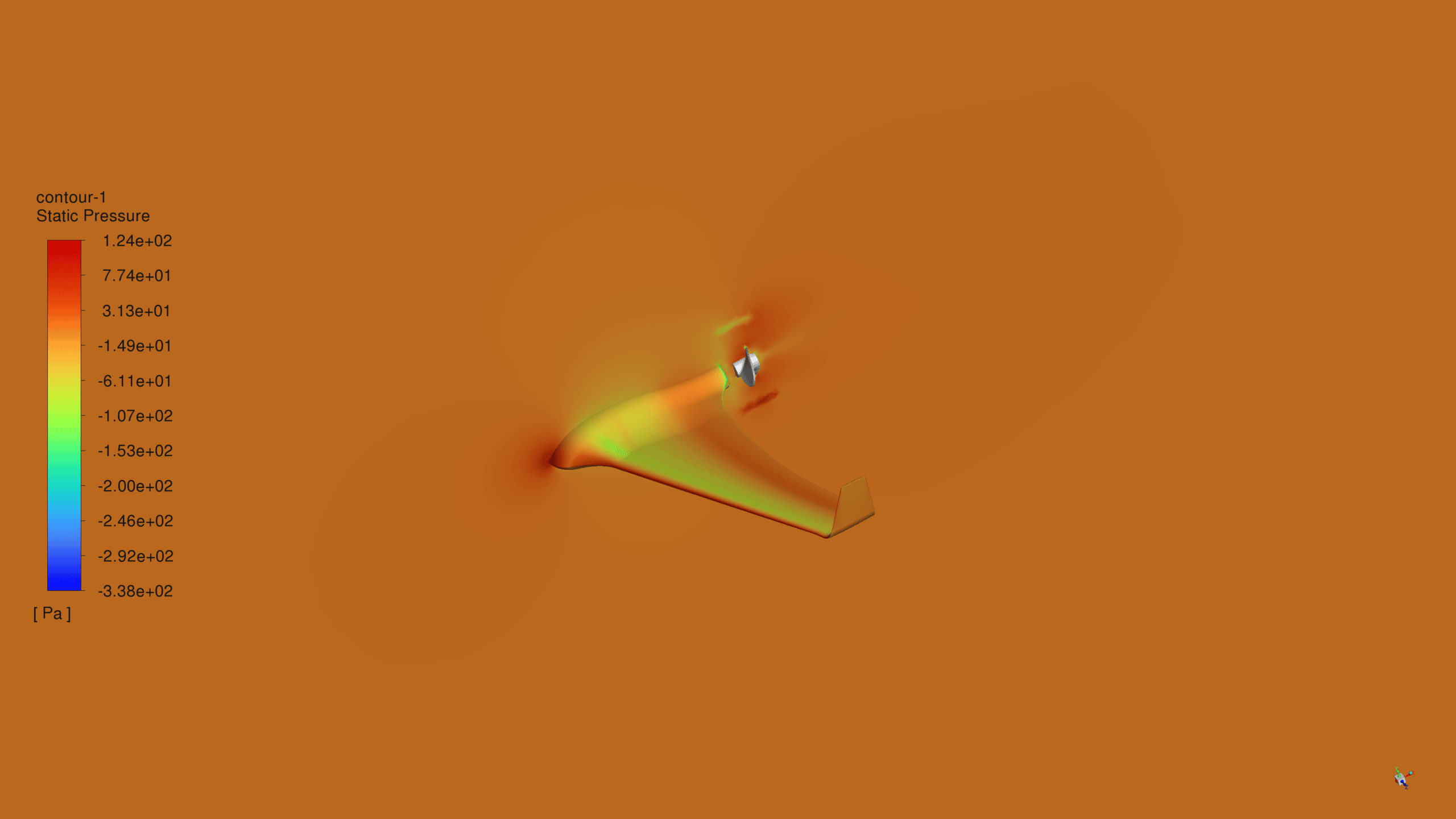
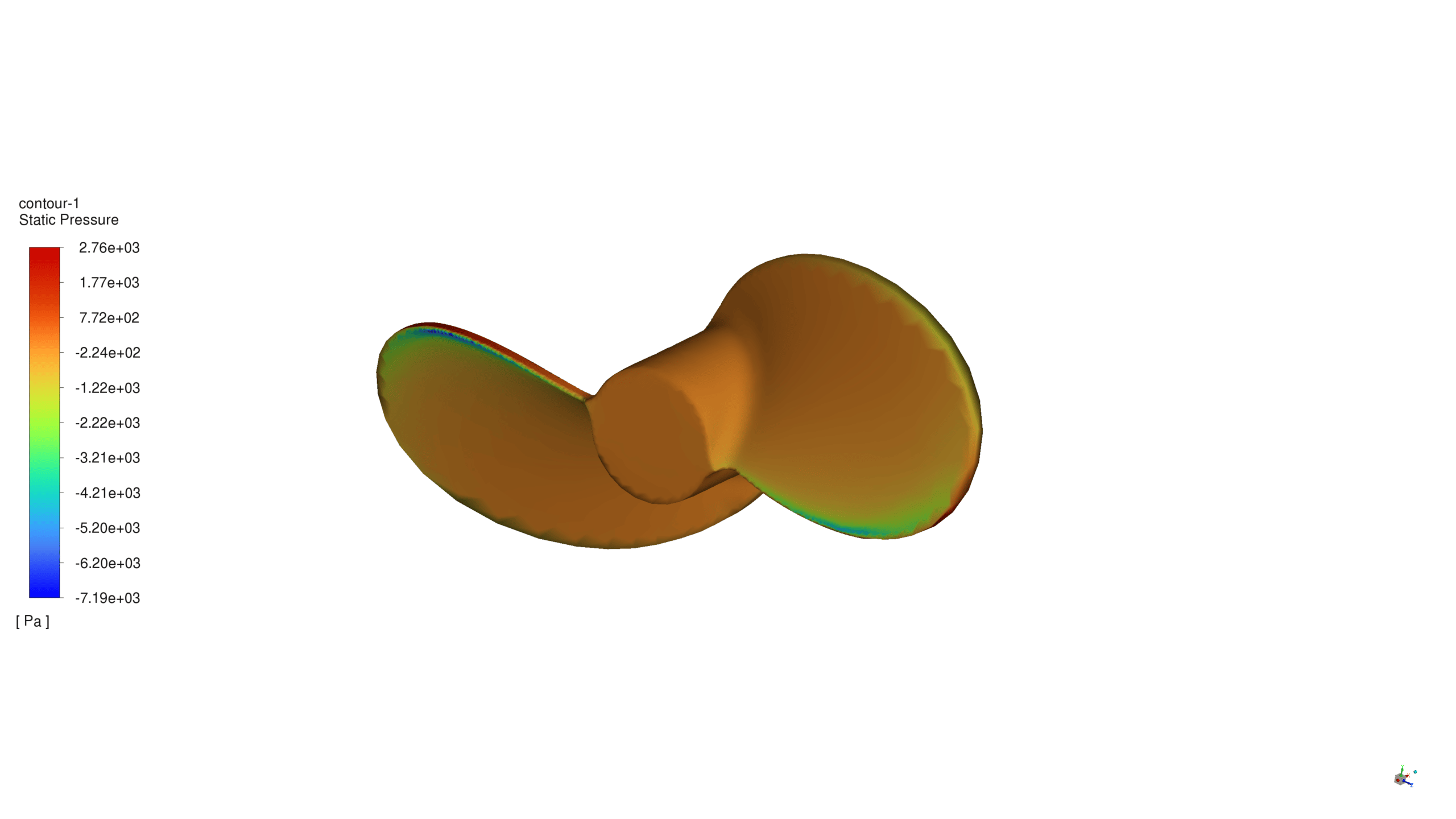
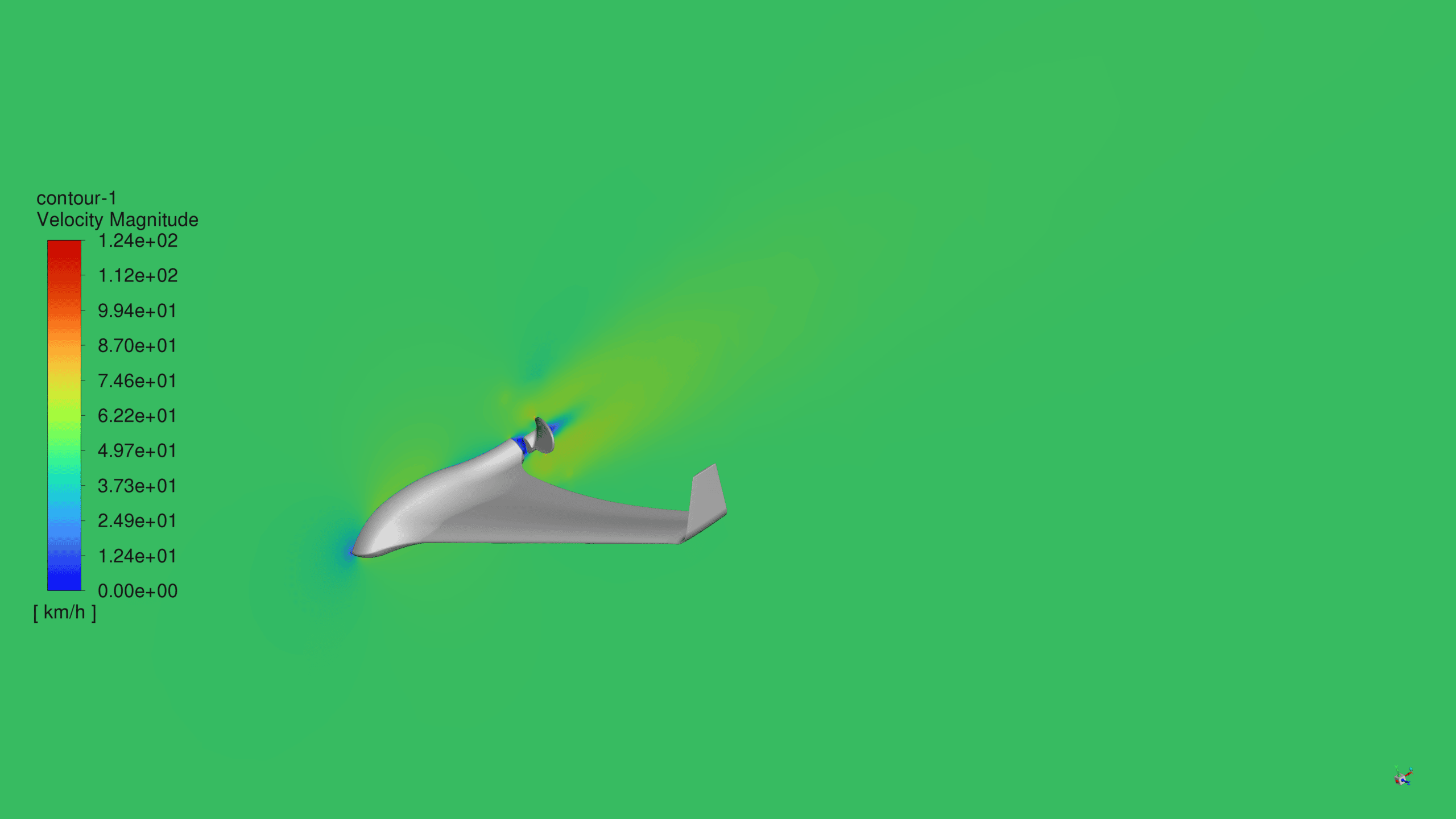
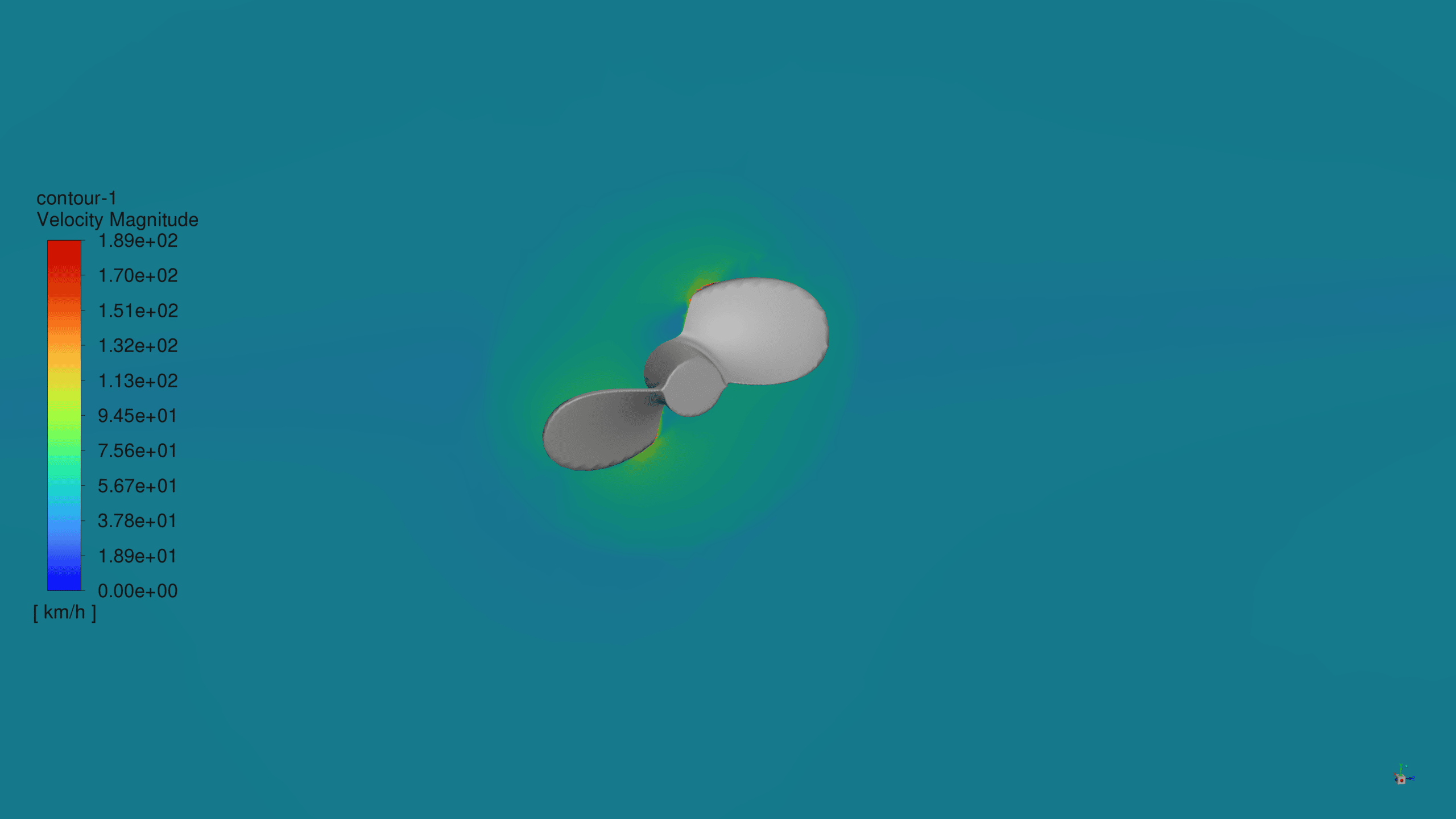

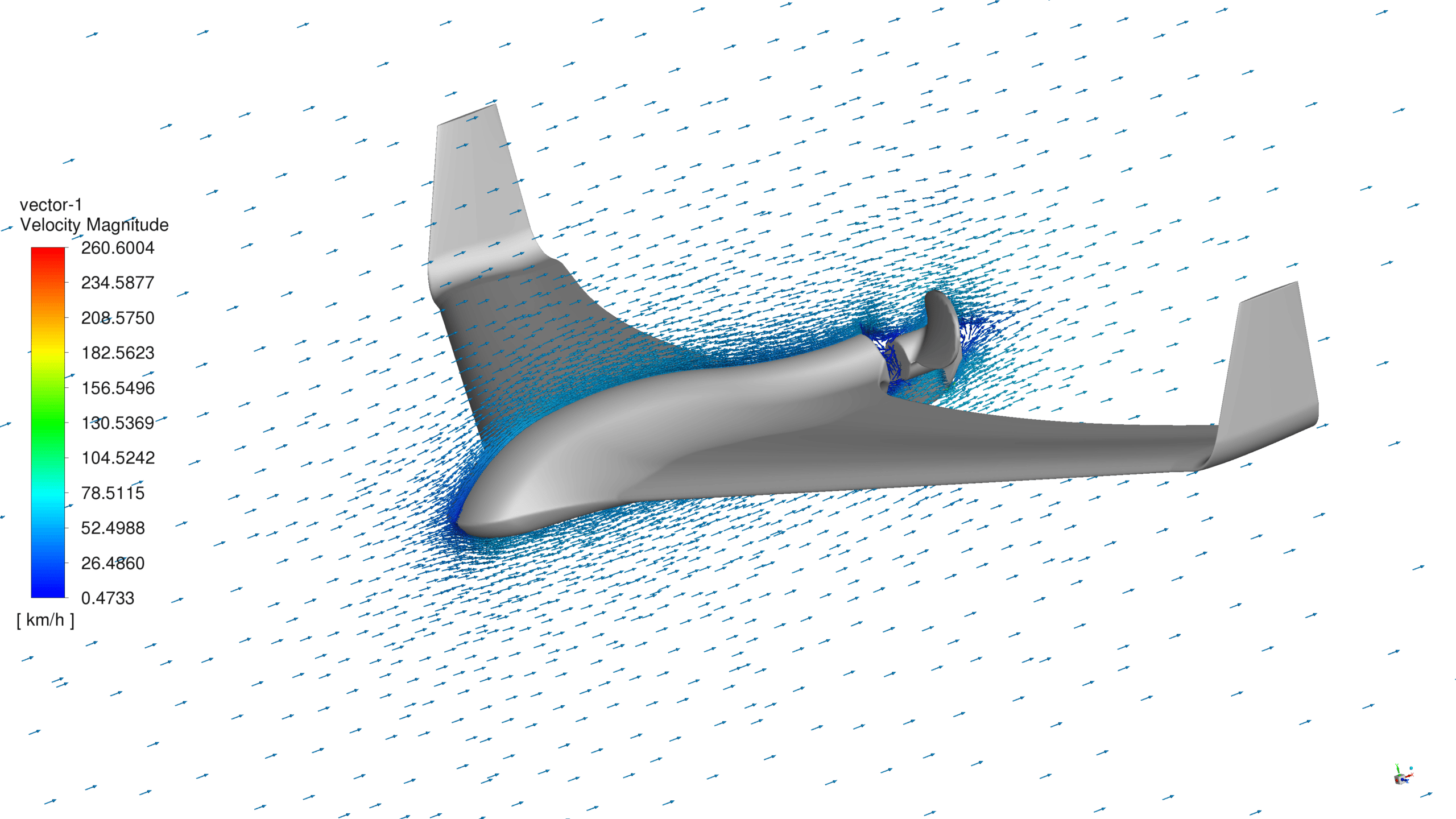
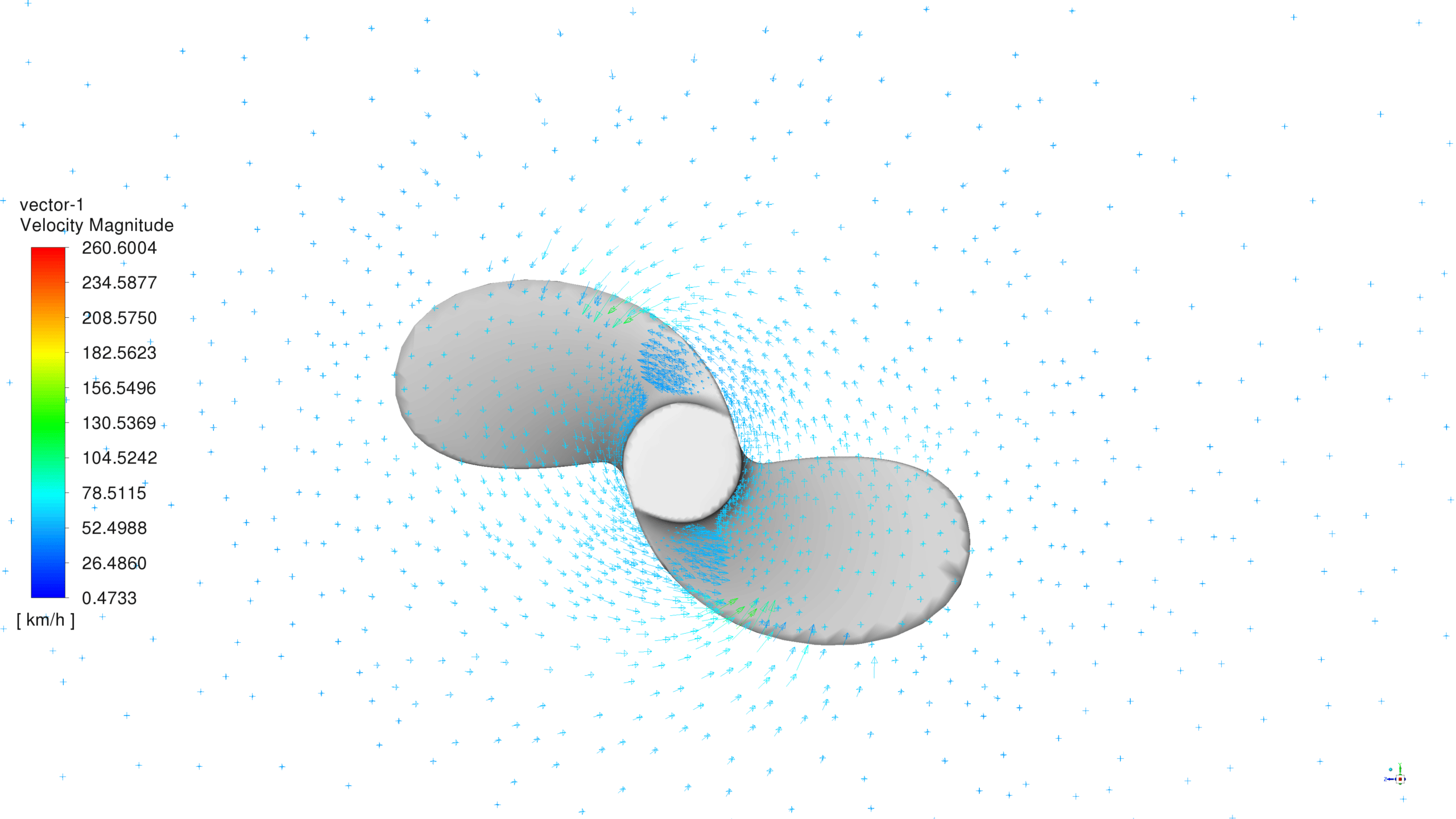
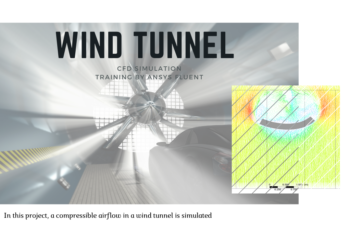
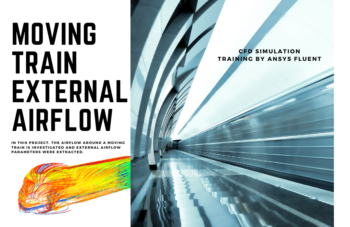
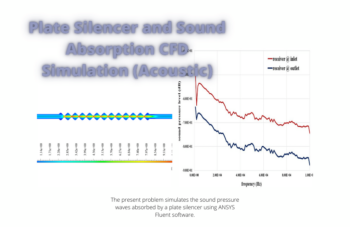

Dr. Erling Stark –
The aerodynamic capabilities of this model seem exceptional. I admire the careful detailing of the simulation which targets improved UAV performance.
MR CFD Support –
Thank you for your positive feedback! We are delighted to hear that you appreciate the detailed nature of our Skywalker X8 UAV aerodynamic simulation and the focus on enhancing UAV performance through careful analysis. If you have any further questions or need assistance with similar simulations, please let us know!
Araceli Daugherty –
I was impressed by how the Skywalker X8 UAV simulation predicted the static pressure and airflow changes!
MR CFD Support –
Thank you for your compliment! We’re glad to know the simulation met your expectations and provided the insights you needed into the aerodynamic performance of the Skywalker X8 UAV.
Luella Morar –
This is an insightful review of the X8 UAV simulation using ANSYS Fluent. I’m impressed by the intricate details included, such as the use of MRF for the propeller’s rotation and the results showing the characteristics of the velocity contours and pressures on the UAV. Well done on a comprehensive simulation.
MR CFD Support –
Thank you for taking the time to provide feedback on our Skywalker X8 UAV CFD simulation. We’re thrilled to hear that you found the details and methodology comprehensive and insightful. It’s always encouraging to hear that the hard work put into our simulations is appreciated. If you have any further insights to share or need more tutorials, feel free to reach out. Thank you for your review!
Prof. Antoinette Heaney –
I was really impressed by the level of detail in the Skywalker X8 Drone CFD Simulation tutorial by MR CFD Company. The step-by-step process has helped me understand the intricate work involved in simulating aerodynamic performance in UAVs. It’s great to see the use of Polyhedra mesh and how effectively the MRF method was applied for the propellers’ motion.
MR CFD Support –
Dear customer, thank you so much for your positive feedback! We’re thrilled to hear our Skywalker X8 Drone CFD Simulation tutorial was helpful and informative. Our team works diligently to provide detailed and accurate simulations to assist our clients. If you need further assistance or have any more questions, please do not hesitate to reach out to us.
Tyrique Simonis –
I’m impressed with how detailed the simulation for Skywalker X8 Drone is. Your work highlights the efficiency and aerodynamics of the model perfectly!
MR CFD Support –
Thank you for your kind words! We’re thrilled to hear that our simulation met your expectations and provided the detailed insights you were looking for. If you have any further inquiries or need additional assistance, don’t hesitate to reach out to us. We’re here to help!
Leanna Monahan PhD –
The details provided show that the Skywalker X8 Drone CFD Simulation is highly detailed and utilizes sophisticated techniques to provide accurate results. The unique aerodynamic shape contributing to low drag and strategic placement of components to avoid vortices impacting them demonstrates a comprehensive understanding of UAV design. Great to see how the various aerodynamic patterns, like the creation of vortices behind the propellers, have been captured that can influence the flight performance of UAVs.
MR CFD Support –
Thank you for your positive feedback on the Skywalker X8 Drone CFD Simulation tutorial. We are delighted to see that our customers appreciate the depth and detail of our simulations, and we are continuously striving to provide high-quality products that are detailed and accurate. It’s great to hear that our attention to aerodynamic efficiency and component placement resonates with users like yourself!
Gladys Watsica –
After going through the detailed and precise Skywalker X8 Drone simulation, I was really impressed with the thorough analysis and presentation of results. Your approach on implementing the CFD technique perfectly captured the aerodynamic behavior of the UAV!
MR CFD Support –
Thank you for your positive feedback! It’s gratifying to hear that you appreciate the effort put into the Skywalker X8 Drone CFD simulation and that the analysis met your expectations. We’re thrilled to have provided insights into the UAV’s aerodynamic performance. If you need any further information or have another project in mind, please don’t hesitate to reach out.
Brian Rohan –
The simulation outcomes for the Skywalker X8 are fascinating. The details provided revealed a lot about the aerodynamics involved and the efficiency of this design. The visualization of the pressure and the vortexes created by the propellers give deep insight into UAV performance. Phenomenal job on this CFD analysis!
MR CFD Support –
Thank you for your positive feedback! We are thrilled to hear that you found the CFD simulation results of the Skywalker X8 UAV so informative and the visualization of the aerodynamics insightful. It’s great to know that our analysis could provide a deeper understanding of UAV performance. We appreciate your compliments on our work!
Mandy Gleichner –
Absolutely blown away by the Skywalker X8 Drone CFD simulation! The detail in the turbulent intensity parameters and the velocity contours is impeccable. It’s fascinating to see how the UAV components’ placement contributes to less drag, making this simulation a perfect learning tool for aerodynamics and drone design enthusiasts!
MR CFD Support –
Thank you for your positive feedback! We’re thrilled to hear that you found our Skywalker X8 Drone CFD simulation so informative and valuable. It’s great to know that it has served as a beneficial tool for understanding the intricate aspects of UAV design and aerodynamics. Your appreciation means a lot to us, and we look forward to providing you with more high-quality simulations in the future!
Adolfo Marks –
The Skywalker X8 Drone simulation seems comprehensive. Have the outcomes been favorably compared to any wind tunnel or field test data to validate the CFD results?
MR CFD Support –
The simulation outcomes have not been directly compared to wind tunnel or field test data in the description provided. CFD simulations are often validated against experimental data to ensure accuracy; however, accessing the validation details would require further information or additional resources outside at this time.
Mr. Edison Moore DDS –
The Skywalker X8 Drone CFD tutorial provided insight into the UAV’s aerodynamics using ANSYS Fluent, and it offered a practical example of applying CFD analysis to drone design. The tutorial’s detail on meshing and methodological approach using the MRF method lends insights beneficial to my drone design projects.
MR CFD Support –
Thank you for your feedback! We’re delighted to hear that our Skywalker X8 Drone CFD simulation tutorial has been useful for your drone design work. It’s great to know that the information on meshing and the use of the Multiple Reference Frames method was insightful. If you have any further questions or need additional support with your projects, feel free to contact us.
Shany Wiegand V –
I found the Skywalker X8 Drone tutorial very informative. The visuals made it easier to understand how the airflow interacts with the drone. Great job on explaining the vortex behavior behind the propeller.
MR CFD Support –
Thank you for your positive feedback! We are thrilled to hear that the tutorial was informative and that the visualizations enhanced your understanding. We aim to provide clear explanations, especially on complex aerodynamic interactions. Stay tuned for more insightful simulations and tutorials!